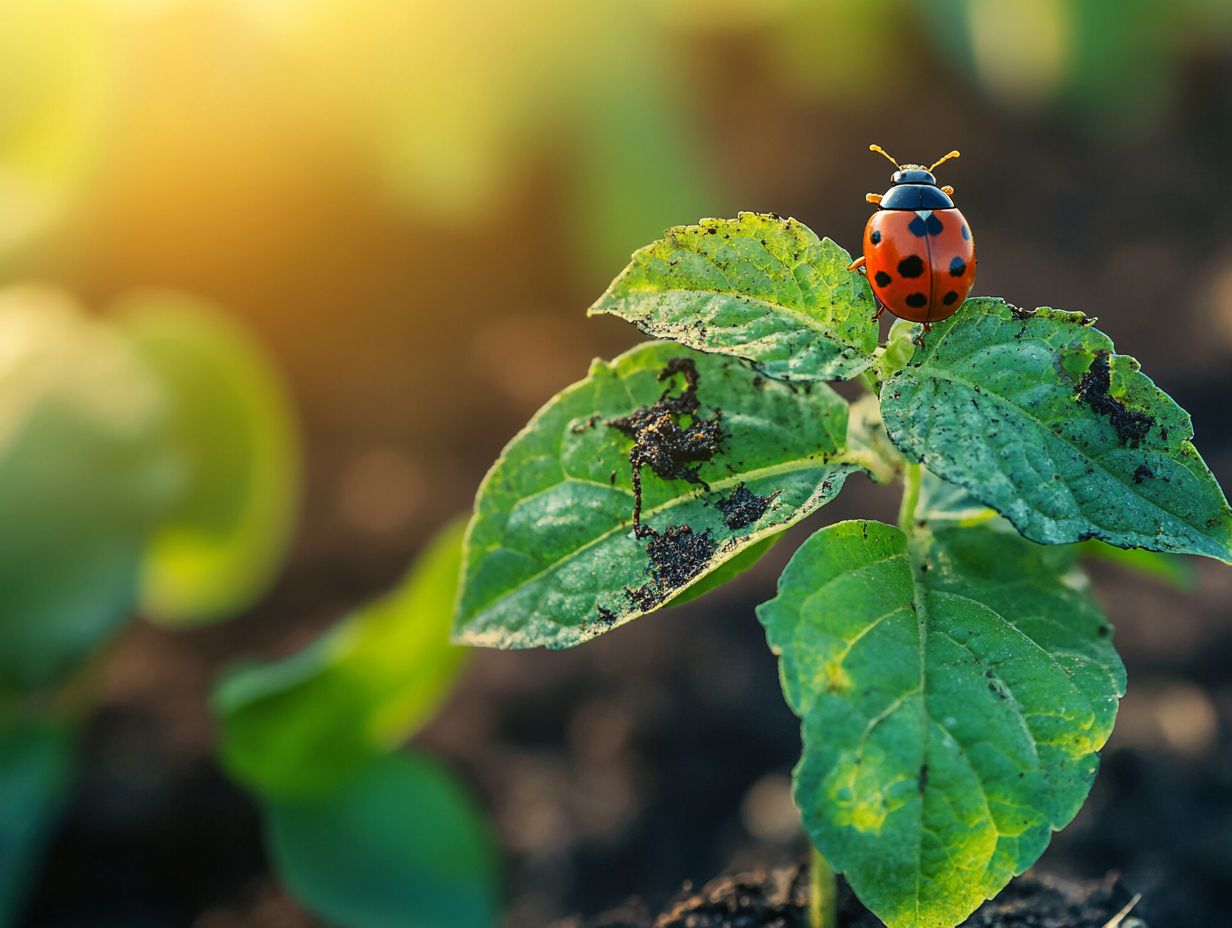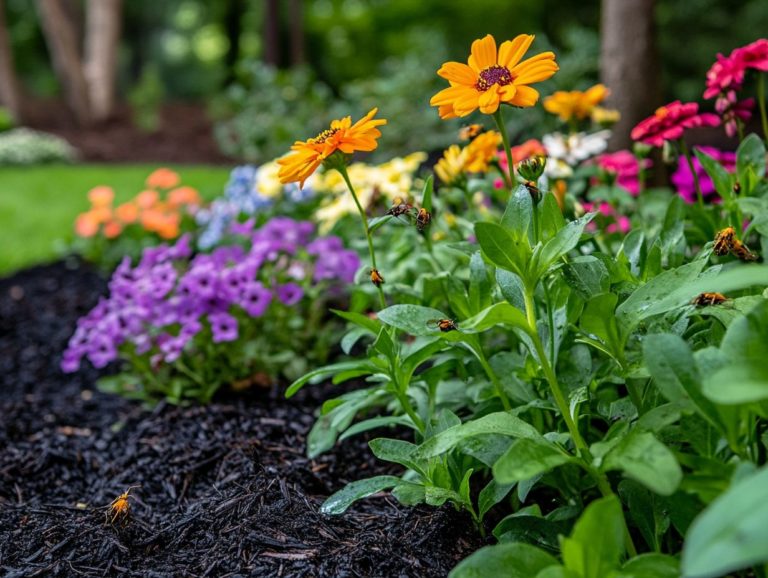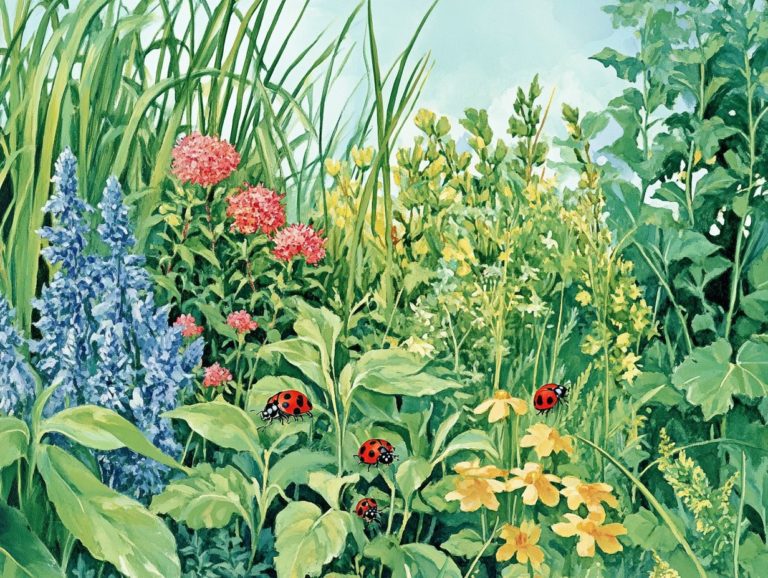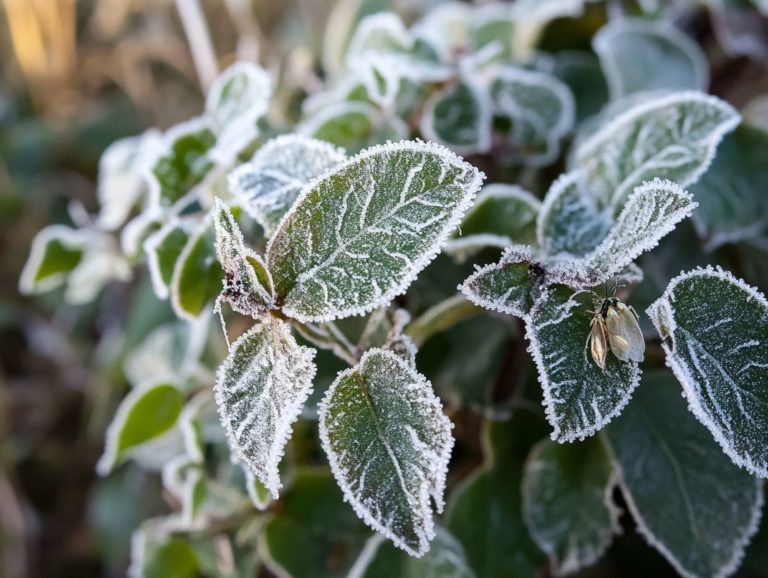Understanding Pest-Plant Relationships
Pest-plant relationships are fundamental to the ecosystem, shaping everything from biodiversity to agricultural productivity.
These interactions can take on various forms mutualistic, parasitic, or commensalistic each offering its own set of challenges and benefits that are important to understand.
This article delves into the different types of relationships between pests and plants, featuring examples that include insects, fungi, and animals. It also highlights the significant impacts these relationships have on agriculture and ecosystems, along with effective management strategies to mitigate any negative effects.
Explore the exciting world of pest-plant relationships as we uncover the intricate dynamics of these interactions and their implications for our environment.
Contents
Key Takeaways:
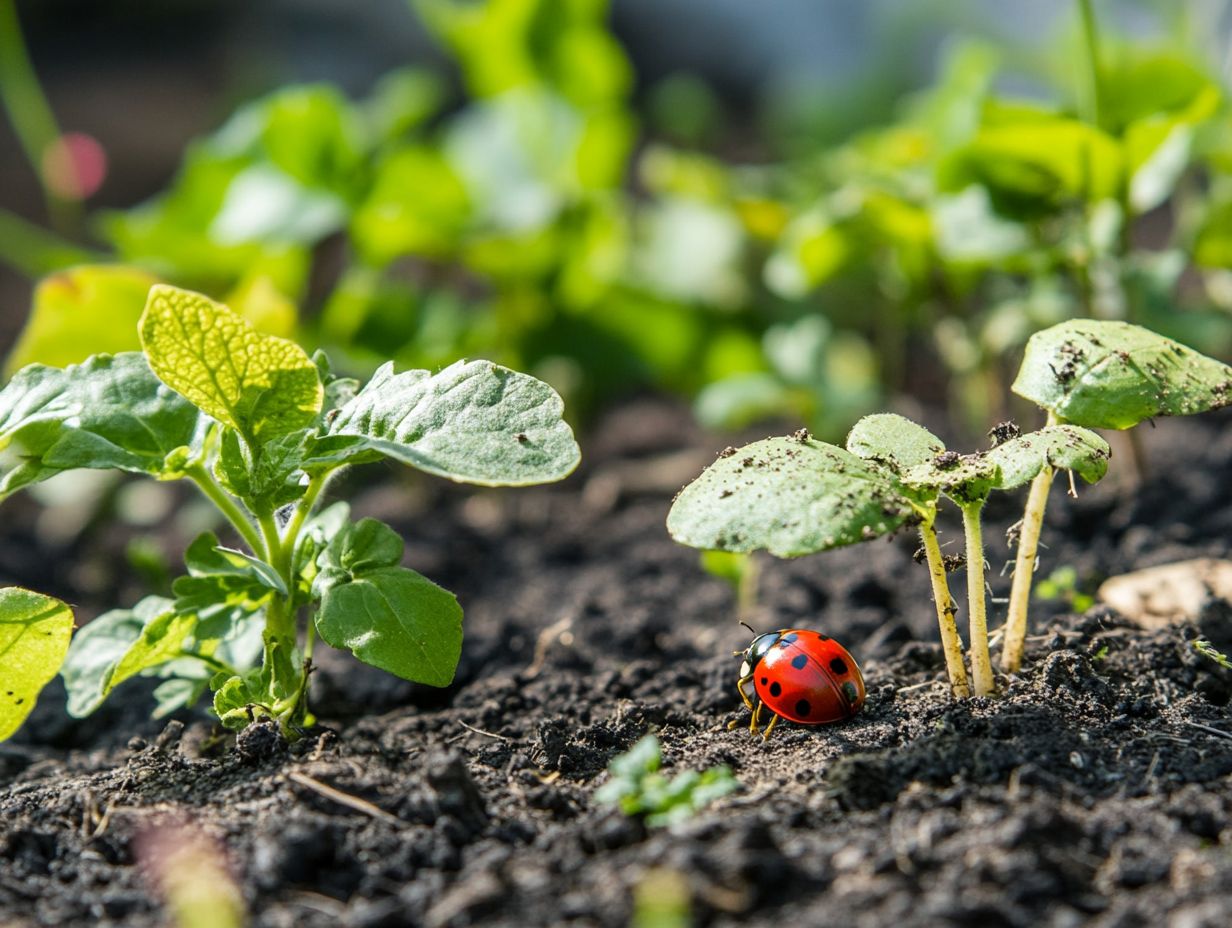
- Pest-plant relationships can significantly impact agriculture and ecosystems.
- There are three types of pest-plant relationships: mutualistic, parasitic, and commensalistic.
- Understanding and effectively managing these relationships through preventive measures and control techniques is crucial for maintaining healthy plant populations and ecosystems.
What are Pest-Plant Relationships?
Pest-plant relationships reveal a captivating aspect of the natural world, highlighting the intricate interactions that occur between living organisms, particularly between plants and the pests they encounter.
These relationships can vary widely, from detrimental to advantageous, reflecting a continuum where organisms engage in mutualism, parasitism, or commensalism. Within this dynamic, you can truly appreciate the critical role of plant responses and signaling mechanisms.
Grasping these nuances is essential for understanding how ecosystems operate and flourish amidst a myriad of influences.
Types of Pest-Plant Relationships
You ll encounter three primary types of pest-plant relationships, each showcasing distinct interactions and dependencies among living organisms in the natural world:
- Mutualistic
- Parasitic
- Commensalistic
Mutualistic Relationships
Mutualistic relationships exemplify a remarkable symbiotic connection where both plants and their associated pests reap significant benefits. Take pollination (the transfer of pollen from one flower to another), for instance it’s crucial for the reproduction of flowering plants and also sustains the insects that perform this vital service.
A prime example of this interdependence lies in the relationship between bees and wildflowers. As bees gather nectar to fuel their existence, they inadvertently transfer pollen from one bloom to another, enhancing genetic diversity among the plants. This process ensures that bee populations have a consistent and reliable source of nourishment. Consider butterflies as they seek out specific plants like milkweed, which offers both nectar and a suitable environment for laying their eggs.
These relationships underscore the delicate balance of ecosystems, revealing that the existence of diverse plant species is just as essential for insect survival as their pollination efforts are for the reproduction of those very plants.
Parasitic Relationships
Parasitic relationships exemplify a fascinating dynamic where one organism thrives at the expense of another, often resulting in harm through the eating of plants by insects and the introduction of invasive pests that can severely compromise plant health and survival.
Invasive pests, like the infamous emerald ash borer and the spongy moth, disrupt the delicate balance of ecosystems by voraciously feeding on native plants, leading to significant decline or even extinction of vulnerable species. As these plants grapple with survival challenges, they exhibit remarkable adaptations, such as producing compounds that help defend the plants or developing thicker leaves to withstand further damage.
Some species may even seek out mutualistic relationships with beneficial insects that act as biological control agents against pests. This adaptive strategy highlights their resilience in counteracting the negative impacts of parasitism, allowing them to sustain growth and reproduction in an increasingly challenging environment.
Dive deeper into these fascinating relationships and discover how you can help protect our ecosystems!
Commensalistic Relationships
Commensalistic relationships unfold when one organism reaps benefits while the other remains untouched, neither helped nor harmed. This dynamic offers a captivating glimpse into the intricate interactions of the natural world.
You can observe these relationships across diverse ecosystems where various species coexist and engage with one another. For example, barnacles often choose larger mammals like whales as their perch. They enjoy the advantages of transportation and food access, all without imposing any significant impact on their whale hosts.
Another classic instance features epiphytic plants, which thrive on tree branches, soaking up sunlight and moisture while their host trees carry on unaffected. These amazing interactions are crucial for boosting biodiversity and stability in our ecosystems!
Examples of Pest-Plant Relationships
You ll discover fascinating examples of pest-plant relationships across various ecosystems, highlighting the intricate interactions among insects, fungi, and plants.
Notable species such as Bigleaf Magnolia, Chokecherry, and Bur Oak stand out, especially in regions like the High Line, where these connections become particularly evident.
Insects and Plants
The relationship between insects and plants is incredibly intricate, involving various roles such as pollination and pest protection. Plants have evolved specific strategies to attract beneficial insects while repelling harmful ones.
For instance, flowering plants showcase vibrant colors and alluring fragrances to draw in pollinators like bees and butterflies. These insects, while seeking nectar, inadvertently assist in the transfer of pollen, paving the way for fertilization and seed production.
When plants encounter plant-eating insects, they spring into action with chemical defenses. By emitting volatile organic compounds, they signal predatory insects to come and deal with their herbivore attackers.
This remarkable interplay underscores the significance of insect partnerships and demonstrates how plants actively engage in their own defense strategies. Certain legumes release nitrogen-rich compounds to attract ants, who then offer protection from browsing pests.
Fungi and Plants
The relationships between fungi and plants reveal a remarkable dance of benefits for both, where both parties engage in exchanges that enhance growth and resilience.
Through a network of mycorrhizal connections (networks formed between fungi and plant roots that help with nutrient exchange), fungi enhance nutrient uptake, particularly phosphorus, while plants reciprocate by providing essential carbohydrates.
This captivating partnership elevates the health of individual plants and fortifies the stability of entire ecosystems.
These associations can also strengthen a plant’s resistance to pathogens and environmental stresses, exemplifying extraordinary adaptability. Plant responses to these partnerships vary; some species may adjust their root structures to better accommodate fungal networks, highlighting the dynamic nature of these interactions.
Grasping these relationships illuminates the delicate balance of ecosystems and paves the way for sustainable agricultural practices that can benefit all.
What amazing relationships have you observed in nature? Share your experiences!
Animals and Plants
Animals hold a vital position in pest-plant relationships, especially in pollination and pest protection. Their interactions with living plants are key to maintaining ecological balance.
These interactions are essential for the reproduction of countless flowering plants. Animals, particularly bees and butterflies, act as nature’s couriers, transferring pollen from one bloom to another and facilitating fertilization. Take the honeybee, for example. It not only gathers nectar but also plays a crucial role in the growth of various fruits and vegetables, significantly boosting crop yields.
On the flip side, some predatory insects, like ladybugs, partner with plants by defending them against pests such as aphids, which can wreak havoc on crops. By diving into these intricate relationships, you can see how vital animals are in promoting biodiversity and maintaining a healthy ecosystem.
Impact of Pest-Plant Relationships
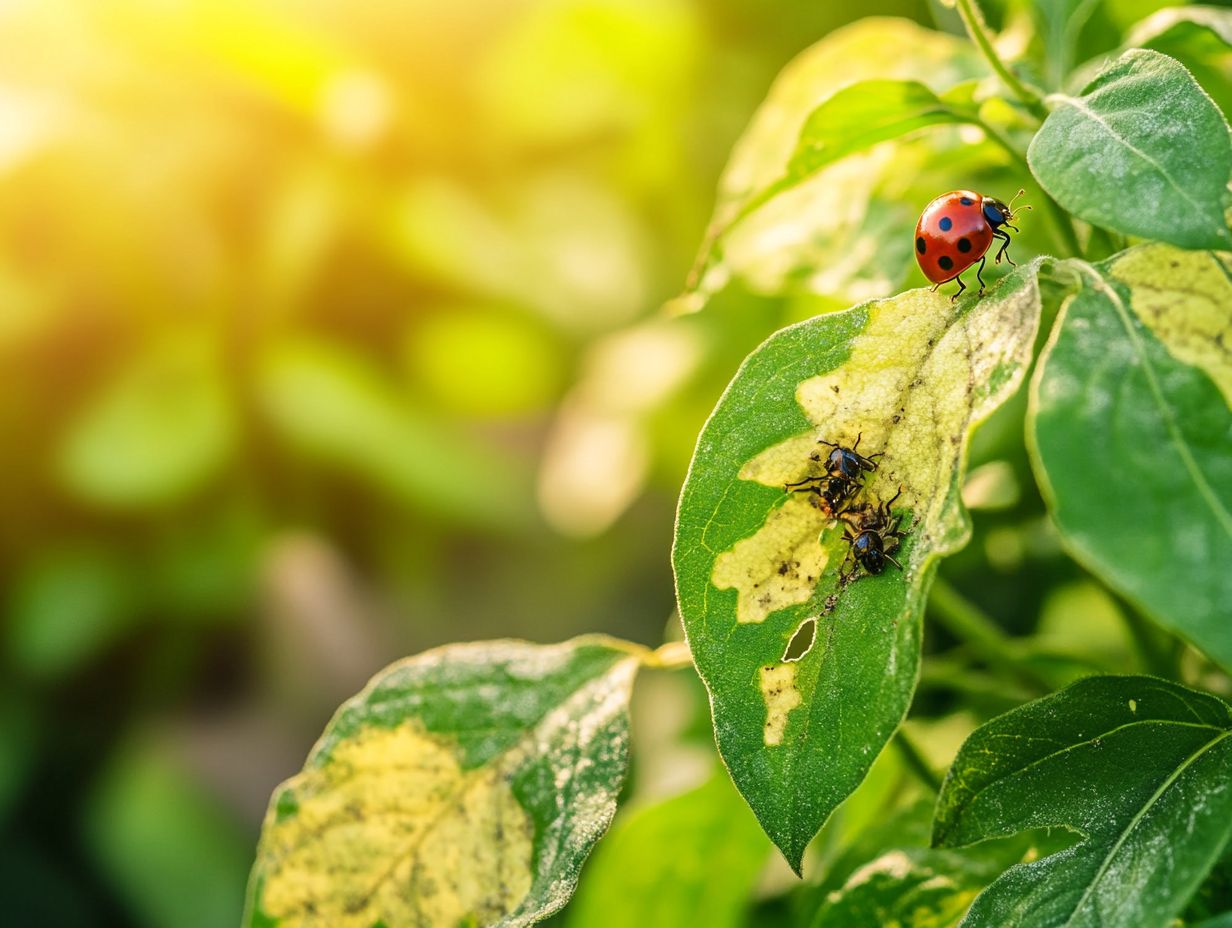
The influence of pest-plant relationships reaches far beyond mere individual interactions. They profoundly shape agriculture and ecosystems alike.
These relationships foster mutual benefits, enhance pest control dynamics, and maintain the delicate balance of natural systems.
Effects on Agriculture and Ecosystems
The effects of pest-plant relationships on agriculture and ecosystems are profound. They shape crop yields, biodiversity, and the overall health of various habitats.
These dynamics create a complex web where certain pests may inadvertently contribute to pollination or help control competing plant species. This reveals a nuanced role in the ecosystem.
As a farmer, navigating these relationships with a strategic mindset is essential. Recognizing that some pests can actually enhance soil health and promote biodiversity allows you to adopt more sustainable agricultural practices.
However, pest outbreaks can pose significant challenges. They jeopardize crop viability and economic stability.
Finding that perfect balance is essential for success! Integrated pest management a method of controlling pests that combines different strategies can offer solutions that maximize ecological benefits while minimizing harmful impacts on your agricultural systems.
Managing Pest-Plant Relationships
Managing pest-plant relationships is crucial for fostering robust ecosystems. This approach enhances effective pest protection and provides valuable insights into how plants respond to various threats.
Preventative Measures
Preventative measures in managing pest-plant relationships are essential. They ensure effective pest protection and nurture plant responses that bolster resilience.
By employing techniques like crop rotation, introducing beneficial insects, and maintaining healthy soil conditions, you can significantly reduce the risk of pest infestations in your garden or farm.
Implementing integrated pest management (IPM) strategies will help you monitor and identify pests early. It will also promote the use of natural predators, minimizing the need for chemical interventions.
Encouraging biodiversity through interplanting will create a more balanced ecosystem, making it challenging for pests to thrive. These proactive steps will safeguard your individual plants and contribute to a vibrant and sustainable agricultural landscape.
Control Techniques
Controlling pest-plant relationships involves a dynamic array of strategies. These strategies enhance pest protection while optimizing plant responses for improved health and productivity.
Your methods can span a spectrum from biological controls like introducing natural predators to mechanical techniques such as traps and barriers.
Cultural practices are also essential. Think crop rotation, proper irrigation, and meticulous soil management to create an environment less hospitable to pests.
When necessary, chemical interventions can serve as a last line of defense. Striking a balance between plant vitality and pest presence is important.
By employing these diverse strategies, you can significantly bolster the resilience of your plants. Cultivating a thriving ecosystem benefits both agriculture and biodiversity.
Frequently Asked Questions
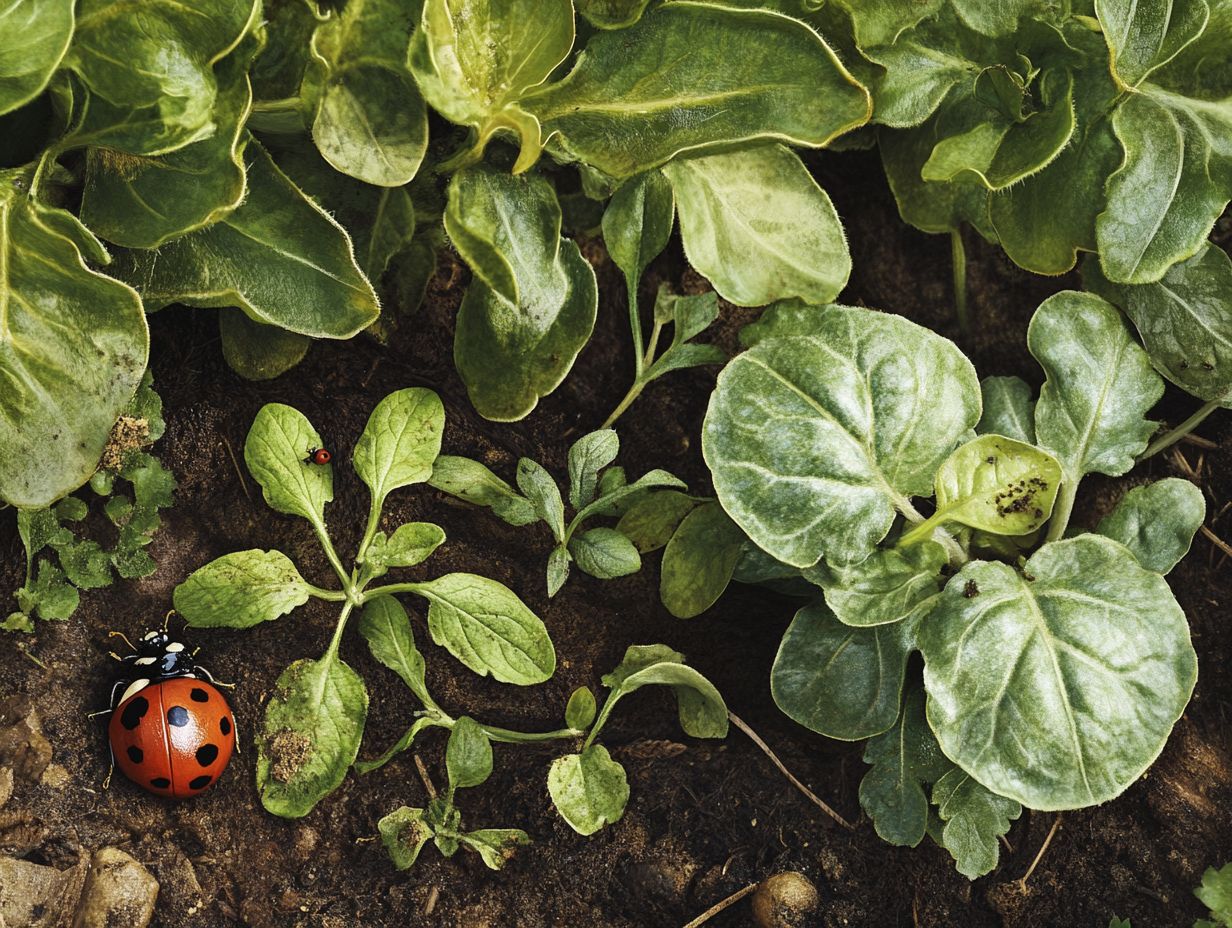
What is Understanding Pest-Plant Relationships?
Understanding Pest-Plant Relationships means knowing how pests and plants interact. It includes how pests affect plant growth and health, and how plants defend themselves.
Why is it important?
This knowledge helps develop effective pest control methods. It also protects plant species from pest damage.
What are examples of these relationships?
Examples include insects eating plant leaves and weeds competing with crops. These relationships can harm plant health and affect the entire ecosystem.
How do pests and plants interact?
Pests feed on plants, causing damage and spreading diseases. Plants can fight back using toxins or physical barriers.
How can this knowledge benefit agriculture?
Farmers can use this understanding to create effective pest control methods. This reduces harmful pesticide use and promotes sustainable farming.
How does it benefit natural ecosystems?
Understanding these relationships helps us maintain ecosystem balance. It aids in protecting native plants and preventing invasive species.

